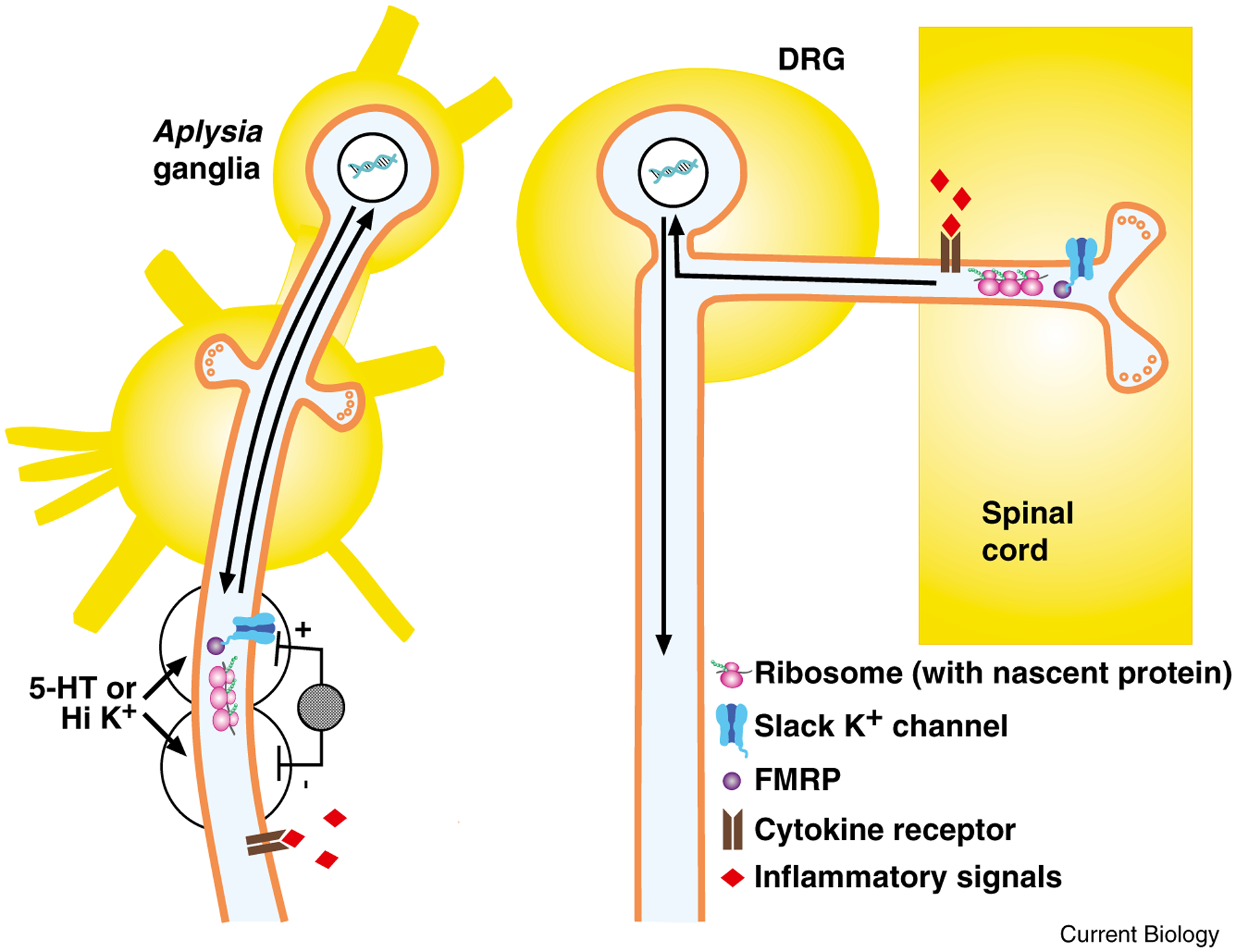Figure 3.

After injury, injury-activated signals trigger local translation and transcription-dependent changes to increase excitability and spontaneous activity in Aplysia sensory neurons and mammalian nociceptors.
Left: sensory neuron in Aplysia. After either nerve crush or application of loose ligature, hemocytes accumulate and release inflammatory signals, such as cytokines and serotonin; these signals initiate long-term hyperexcitability in sensory neuron axons. Alternatively, local application of the inflammatory signal serotonin (5-HT) to, or depolarization with high K+ solution of a small region of axon isolated in wells produces local increase in excitability, assessed by electrical stimulation within wells, with no increase in excitability in other axonal regions. This local increase in excitability requires local protein synthesis (as indicated by ribosome, with mRNA and nascent protein) and transcription (indicated by arrows representing signal to nucleus and new gene products transported from nucleus to axon), but does not require Ca2+ influx or Ca2+ release for initiation. One possible mechanism for initiating local protein synthesis independent of Ca2+ increase is Slack K+ channel regulation of FMRP-gated translation (indicated by Slack channel bound to FMRP). Right: dorsal root ganglion (DRG) nociceptor. After spinal cord contusion, DRG nociceptors at segments above and below crush exhibit increased frequency of spontaneous activity, which is evident both in the peripheral axon and in the isolated cell body. Signaling pathways have not yet been identified, but as suggested here, inflammatory signals from microglia in spinal cord several segments away from injury may initiate the response. Because the increase in excitability is expressed in isolated cell bodies in dissociated cell culture, it is likely to involve changes in transcription (as symbolized by arrows to and from nucleus). Depolarization-induced Slack K+ channel-FMRP triggering of local translation may also contribute to increased excitability and spontaneous activity in sensory neurons; local depolarization is probable after spinal cord injury due to massive release of the excitatory neurotransmitter glutamate.
